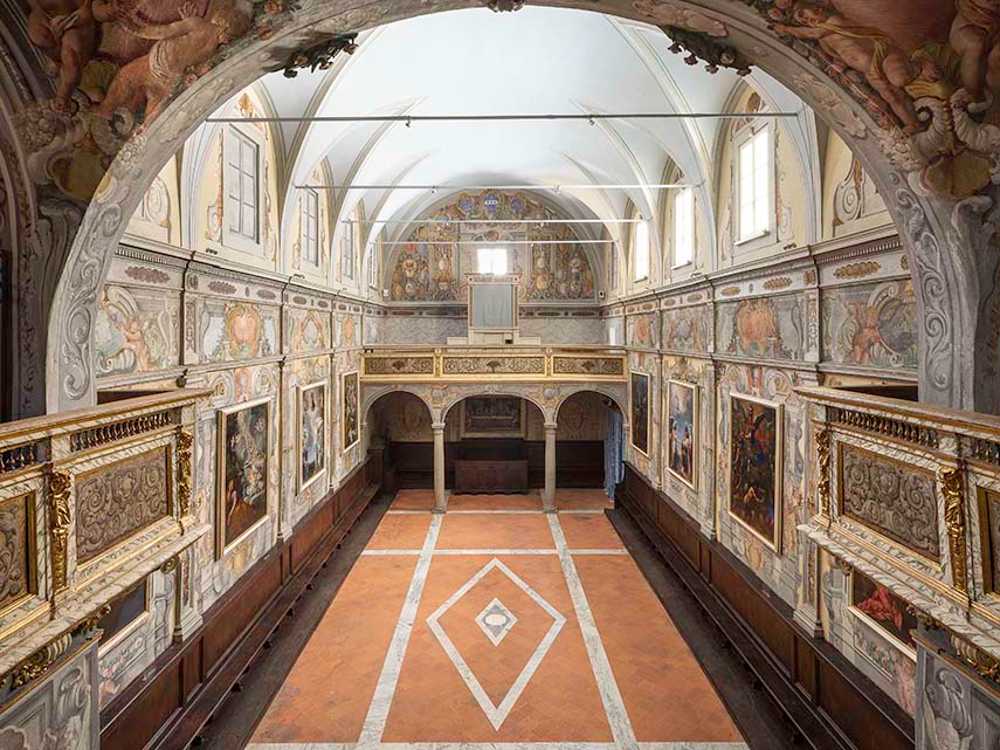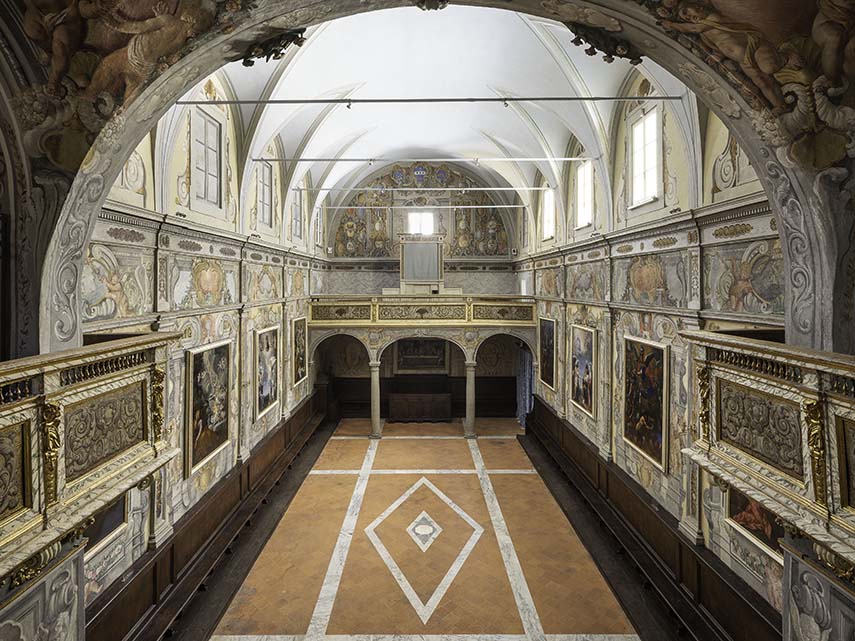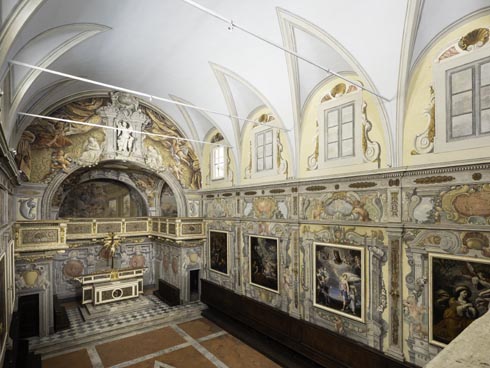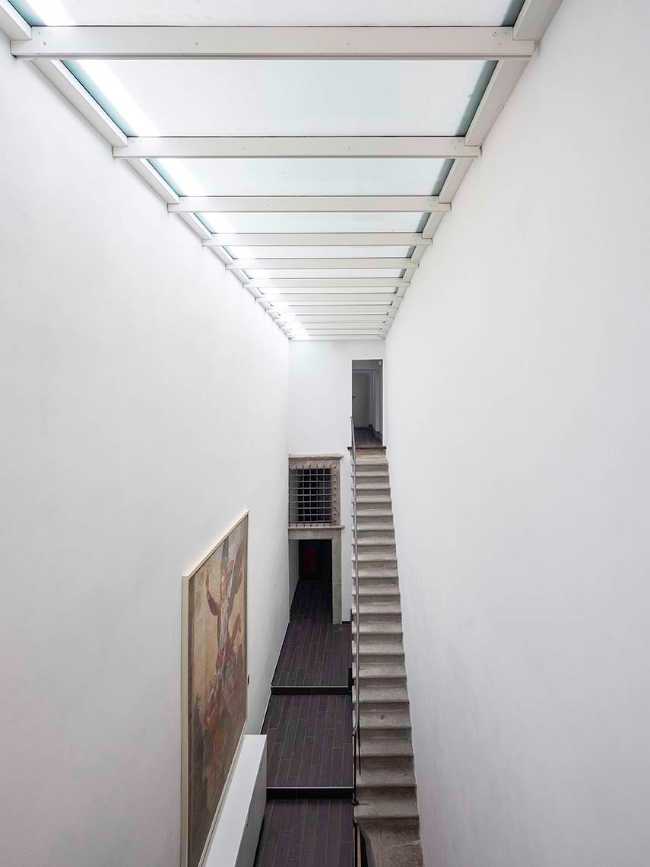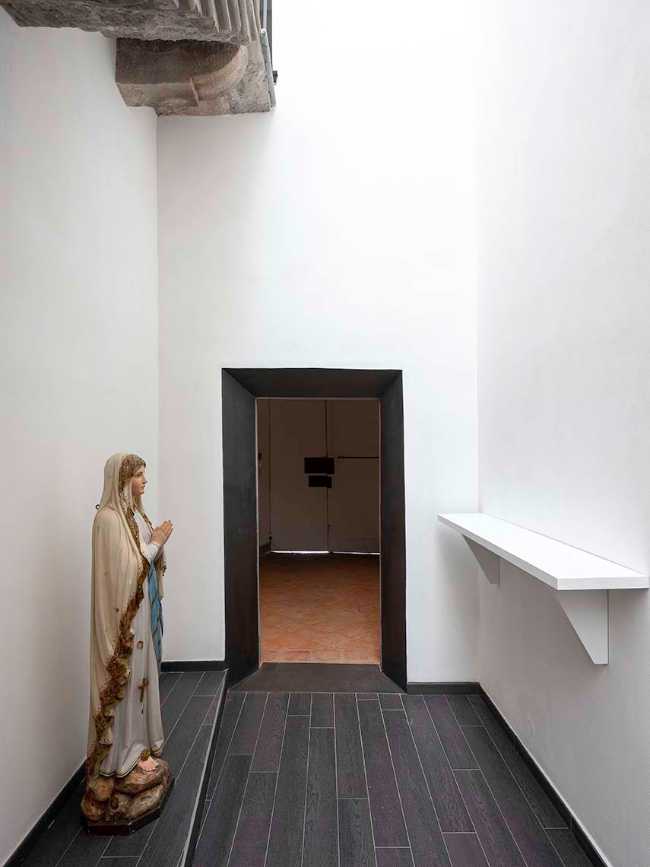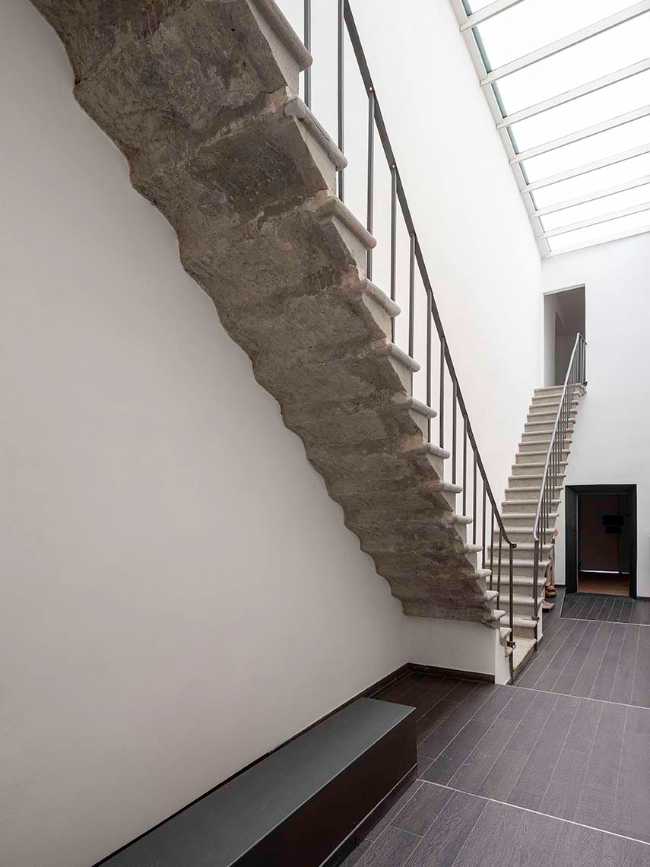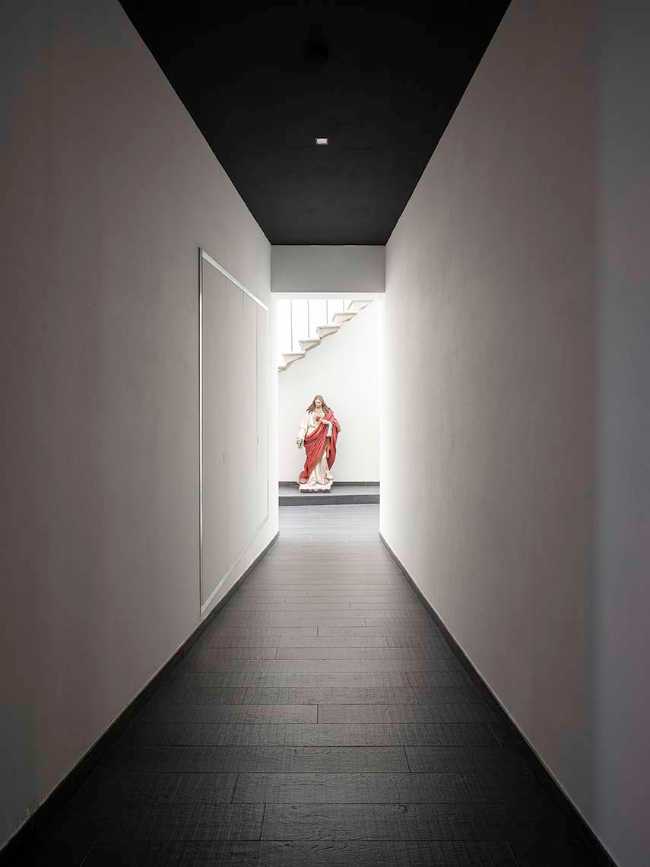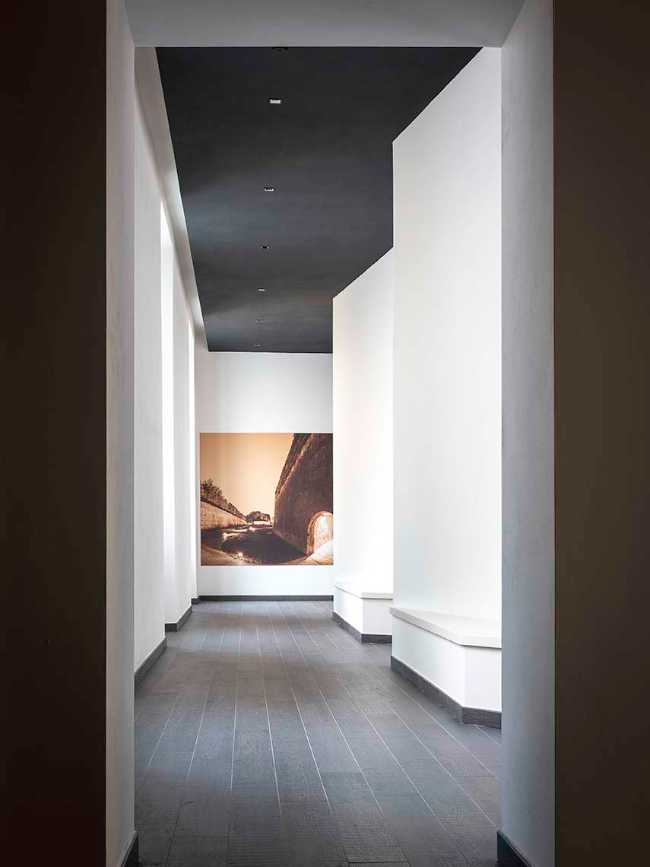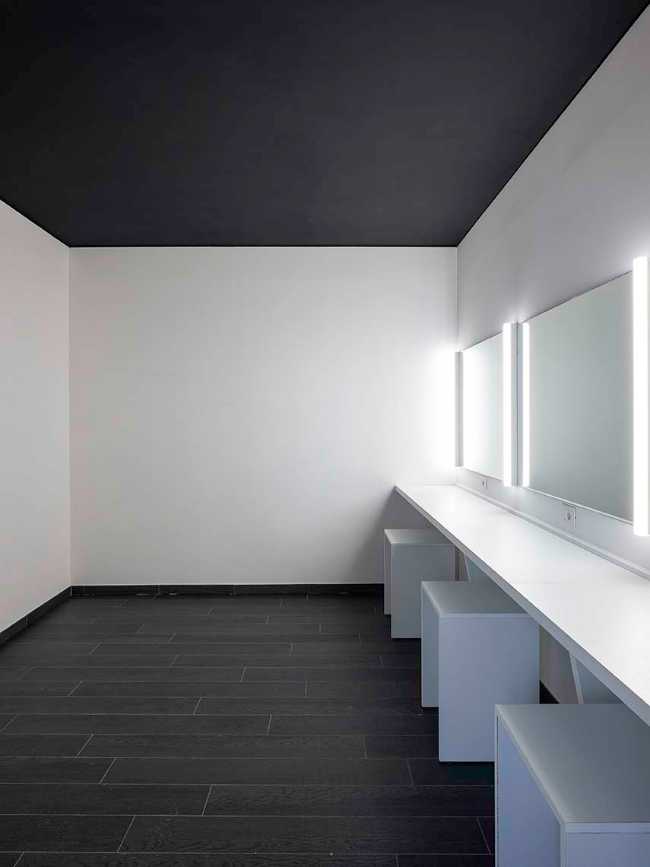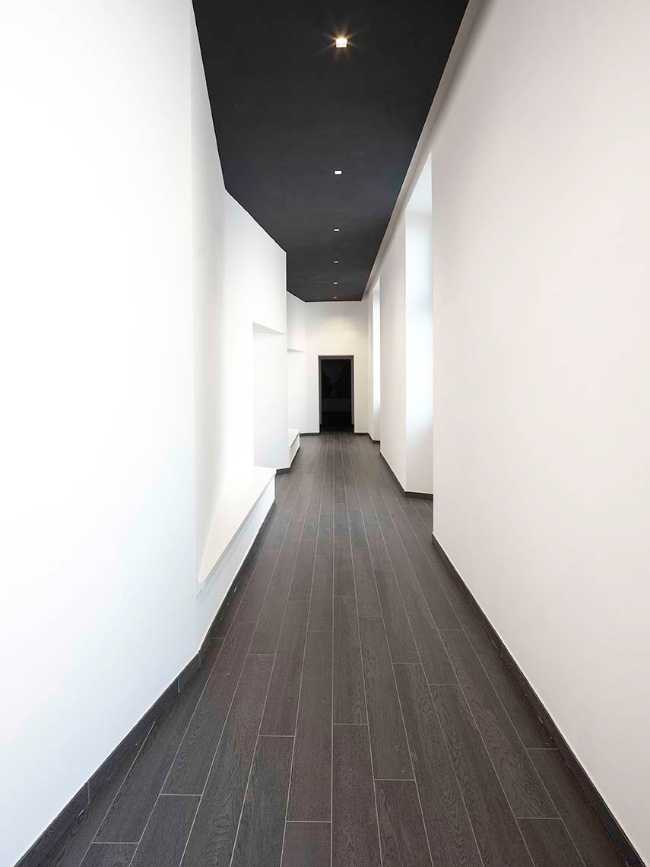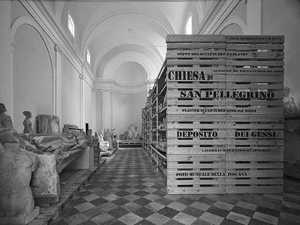Baroque Style and Excellent Acoustics
The Oratory of the Guardian Angels in Lucca, with its modest exterior facade hardly distinguishable from the street, dates back to 1638 when it was built by the homonymous Congregation. Initially lacking in ornaments, from 1658 the Oratory was enriched with paintings and frescoes, becoming an example of baroque decoration, with a cohesive ensemble of frescoes, stuccoes, and canvases that embrace the entire interior of the Church, created between the 17th and early 18th centuries.
Over time, the Oratory has assumed a central role in the cultural and musical life of Lucca, thanks to its excellent acoustics, becoming a favorite place for the composition, rehearsal, and recording of music, as well as for the staging of performances.

